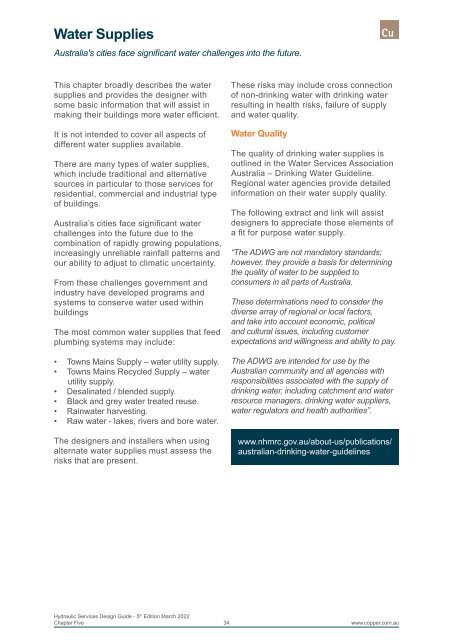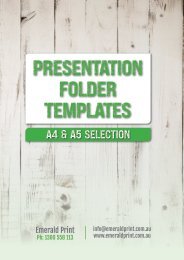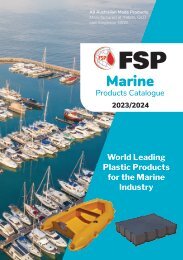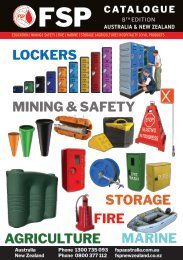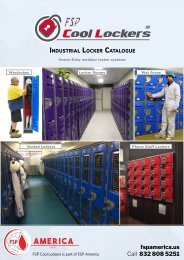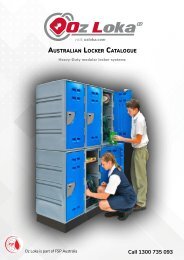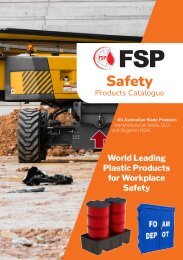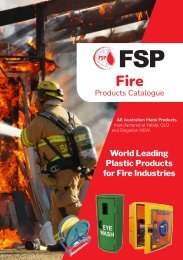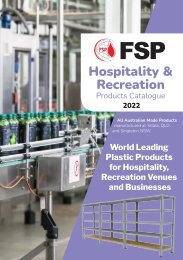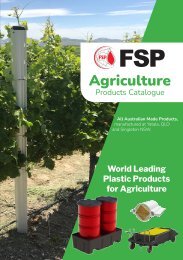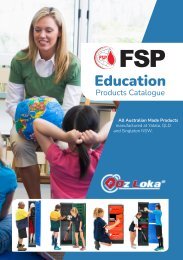Copper Alliance HSDG Australia
Create successful ePaper yourself
Turn your PDF publications into a flip-book with our unique Google optimized e-Paper software.
Water Supplies<br />
<strong>Australia</strong>'s cities face significant water challenges into the future.<br />
This chapter broadly describes the water<br />
supplies and provides the designer with<br />
some basic information that will assist in<br />
making their buildings more water efficient.<br />
It is not intended to cover all aspects of<br />
different water supplies available.<br />
There are many types of water supplies,<br />
which include traditional and alternative<br />
sources in particular to those services for<br />
residential, commercial and industrial type<br />
of buildings.<br />
<strong>Australia</strong>’s cities face significant water<br />
challenges into the future due to the<br />
combination of rapidly growing populations,<br />
increasingly unreliable rainfall patterns and<br />
our ability to adjust to climatic uncertainty.<br />
From these challenges government and<br />
industry have developed programs and<br />
systems to conserve water used within<br />
buildings<br />
The most common water supplies that feed<br />
plumbing systems may include:<br />
• Towns Mains Supply – water utility supply.<br />
• Towns Mains Recycled Supply – water<br />
utility supply.<br />
• Desalinated / blended supply.<br />
• Black and grey water treated reuse.<br />
• Rainwater harvesting.<br />
• Raw water - lakes, rivers and bore water.<br />
The designers and installers when using<br />
alternate water supplies must assess the<br />
risks that are present.<br />
These risks may include cross connection<br />
of non-drinking water with drinking water<br />
resulting in health risks, failure of supply<br />
and water quality.<br />
Water Quality<br />
The quality of drinking water supplies is<br />
outlined in the Water Services Association<br />
<strong>Australia</strong> – Drinking Water Guideline.<br />
Regional water agencies provide detailed<br />
information on their water supply quality.<br />
The following extract and link will assist<br />
designers to appreciate those elements of<br />
a fit for purpose water supply.<br />
“The ADWG are not mandatory standards;<br />
however, they provide a basis for determining<br />
the quality of water to be supplied to<br />
consumers in all parts of <strong>Australia</strong>.<br />
These determinations need to consider the<br />
diverse array of regional or local factors,<br />
and take into account economic, political<br />
and cultural issues, including customer<br />
expectations and willingness and ability to pay.<br />
The ADWG are intended for use by the<br />
<strong>Australia</strong>n community and all agencies with<br />
responsibilities associated with the supply of<br />
drinking water, including catchment and water<br />
resource managers, drinking water suppliers,<br />
water regulators and health authorities”.<br />
www.nhmrc.gov.au/about-us/publications/<br />
australian-drinking-water-guidelines<br />
Hydraulic Services Design Guide - 5 th Edition March 2022<br />
Chapter Five<br />
34<br />
www.copper.com.au


